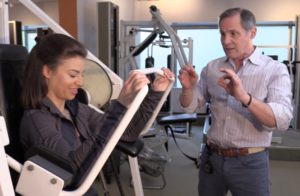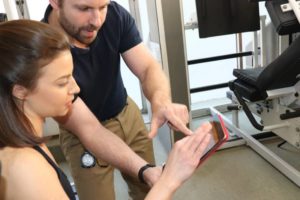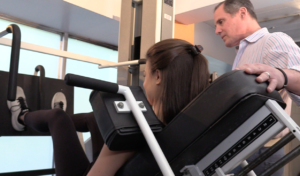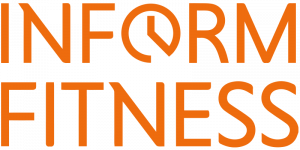In a previous blog post we explored what personal training is and how it fits into the overall world of fitness to help you decide if this is a path, among many fitness options, you should take to help you reach fitness goals. For those who have either decided, or are heavily leaning toward personal training as their fitness path, this post is for you. In this post, we’re going to explore how you go about selecting a personal trainer. At Inform Fitness, many of our clients come to us as referrals from other InForm Fitness clients. Which is not that different from many other businesses, where word of mouth is a key source of new customers and an indicator of a product or service that provides enough value that people are willing to share their positive experiences with friends and family. But let’s say you don’t know anyone that uses a personal trainer, haven’t been given a referral or are just interested in exploring options on your own – how would you go about the process, what are things to look for and how would you evaluate personal trainers to help you find the one that’s right for you?
What fitness category are you in?
First we have to look at the different situations most people are in when looking for a personal trainer. Chances are you may fit into one of these. Most people seeking a personal trainer are typically in one of three categories.
1). Some fitness experience with different fitness facilities, routines or programs, but this is their first fitness experience with personal training and a personal trainer.
2). No prior fitness experience and want their fitness entry point to be supervised and guided by a trained fitness expert.
3). Currently personal training, and while they like the fitness modality of personal training, their current personal trainer is no longer working for them.
No matter the situation you’re in, you are going to evaluate your first, or next, personal trainer in pretty much the same way.
Let’s take a moment to remind ourselves of the role of a personal trainer.
Personal trainers take on great responsibility.
A responsibility as great as their cause – Helping people get maximum benefit of the most valuable asset they will ever own – their health and vitality. It is my personal belief helping people invest wisely in this most precious of assets is the noblest of endeavors.
The nature of working with people regularly regarding their bodies, their health, how they move, respond to exercise and how they progress comes with a good deal of reward, but also a certain degree of risk.
Having a great, not good, but great relationship with a personal trainer is, in my opinion, imperative for success.
So here’s what to look for.
The first cut: Personal Training Licensing and Certifications. As we discussed, personal trainers take on a heavy, yet very necessary responsibility and perform a very valuable service to the public.
Even in the eyes of state and other governing bodies, they see the role of personal trainers as performing an important function – one that needs specialized knowledge, skills and experience to perform correctly. This may come in the form of licensing – authorization to operate a business (think restaurants or auto repair shops as examples) or practice a profession (think nurses and teachers as examples) within a given field and within the geographic boundaries of a state, city, county or municipality. And/or it will also come in the form of certification – acknowledgement from an accredited body that a professional has met educational and/or practical requirements of the given profession.
So licensing and certification are important, albeit foundational parts of becoming a personal trainer. Each state and/or municipality has its own licensing requirements. Sometimes it’s either, sometimes it’s both.
Sometimes, neither are required.
Where licensing is required some must-haves may include insurance requirements and certification from an accredited national body, like NASM, the Nation Academy of Sports Medicine. The requirements can range from strict and well defined to, as mentioned, no real requirements at all. In other words, requirements for personal training vary widely, repeat, widely by state and municipality.
Your first pass is to check with your state or city authorities to what, if any, licensing/certification is necessary and, if so, what is REQUIRED in order to practice personal training in your state or city.
This step is really just the starting point and a first cut at all the options out there. But it’s an important step to separate those personal trainers who meet the requirements, and dedicate themselves to the profession, and those who don’t.
For example, in New York state, where InForm is located, a relevant educational background, certification from a nationally recognized accredited body AND practical experience are all required prior to obtaining a license to practice personal training.
As I mentioned, there are some states and facilities that don’t require any of these at all.
A simple online search for personal or ‘athletic training licensing requirements in [your state/city/area]’ should get you to information about what’s required where you’re located.
There are several organizations that provide accredited programs to certify personal trainers.
Some of the largest and most recognized professional certification organizations for personal trainers include:
- National Academy of Sports Medicine (NASM)
- National Strength and Conditioning Association (NSCA)
- Aerobics and Fitness Association of America (AFAA)
- American Council on Exercise (ACE)
- American College of Sports Medicine (ACSM)
A word of warning. Don’t get hung up on the details or which program is better/worse and try to compare the component parts. There’s no need to look into these deeply. Just know the requirements in your area and use it as a basis of discussion.
Remember, it’s only the starting point.
What is Your Personal Trainer’s Fitness Philosophy?
Where the first part is about separating those who have taken the steps to get an education and certifications, and those who haven’t, this second aspect starts to get into how they specifically approach the art and science of personal training.
Here, we’re not only looking for those personal trainers who have dedicated themselves to personal training as a career and continue to seek to advance their knowledge and skills.
But also, based on their experiences and studies, what is their specific point of view of how they go about the fitness process that works for them and produces results for their clients.
For those who know me and the InForm Fitness process, certainly know we have a very specific point of view on how people should invest in their most precious asset to get the greatest return. (To say the least lol.) Very simply our philosophy is helping clients receive the maximum benefit from the fewest movements in strictest form. At the center is focused muscle engagement in strict, slow, controlled movements to maintain and grow strength – the bedrock, foundational objective of health and vitality. The slow, strict, controlled movement allows for maximum muscle engagement with the fewest moves, therefore maximizing benefits while minimizing the risk of injury. The risk of injury takes clients away from our prime objective of health and vitality and why we actively seek to minimize it.
There’s a simple elegance in our approach to maximizing results and minimizing injury. It’s why myself and the InForm Fitness team continue to believe wholeheartedly, this is the optimal approach to fitness for most people at any stage of their fitness journey.
As you interview prospective trainers, they also should have a specific point of view, an overarching approach, as to how they go about the process. Which they should be able to explain to you simply and in layman’s terms.
This should all lead to…
“How would their fitness philosophy apply to me”?
As you interview trainers, what they tell you regarding their philosophy is important, but not nearly as important as what they ask.
They should be interested in getting to know you. Some of the basics like your current fitness goals, fitness experiences, basic health background, how you found them, expectations etc.
Where this should lead to is how their overall fitness philosophy would apply to where you are on your fitness journey and what you’re trying to accomplish. The goal of this part of the conversation… start to outline a nearterm plan for beginning with you, ramping and progressing.
Does my style match with theirs?
Beyond the factual knowledge of how they go about personal training and what you’re looking to accomplish, you should feel like you can relate to this person not only as a professional, but as a person.
Needless to say, personal trainers have specific ways of being that may work for them and their clients, but may not work for you.
For example, a high energy, driving trainer may work very well for A-type personalities but may not work for someone who is more laid back.
No style is right or wrong, just whether a particular style works for you or not.
You should be able to gauge a sense of whether their style will work for you in your introductory conversations.
What kind of clients are they looking for?
Relately personal trainers should know the kind of client they are seeking and match up best with.
Bottom line this is a perfectly legitimate topic to be discussing with your trainer.
Remember this is going to be a close and, hopefully, long-term relationship with a professional who will help you through really important goals and challenging work.
Relating as people will make this process easier.
Everything Else
And finally the last area you should explore is more about their business mechanics. For example, do they make it easy to do business with them and/or their organization? Scheduling, invoicing, reminders, changes all the things that facilitate the maintenance of a successful business relationship in today’s digital world.
In other words, are they running a business…. or is personal training a gig?
Should you be discussing track records on client results?
Before we go we should spend some time on client results. This has always been tricky. There’s a saying in our industry “No one can exercise for you.” The short answer should be “For those who commit to, and stick with the process, it works.” But sometimes a client’s initial enthusiasm wears off and what seems like steadfast commitment at the outset, softens over time.
Maintaining motivation is part of the job and something many clients deal with as they advance in their respective fitness journeys.
Again this should be an open conversation about customer success, longevity, progress and goal achievement. And motivation. How does this personal trainer keep clients motivated over time? You know yourself and how committed you can, or can’t, be to things.
Perhaps maintaining fitness motivation is why you are seeking a new personal trainer in the first place.
Step into the process.
Selecting a personal trainer should not be taken lightly. You have a lot of options out there, but it is an important relationship where you will be focussed on important goals and executing important work.
Use these topics as a starting point and guideposts to make educated decisions on who, what and how works best for you.
To your health,
AZ









